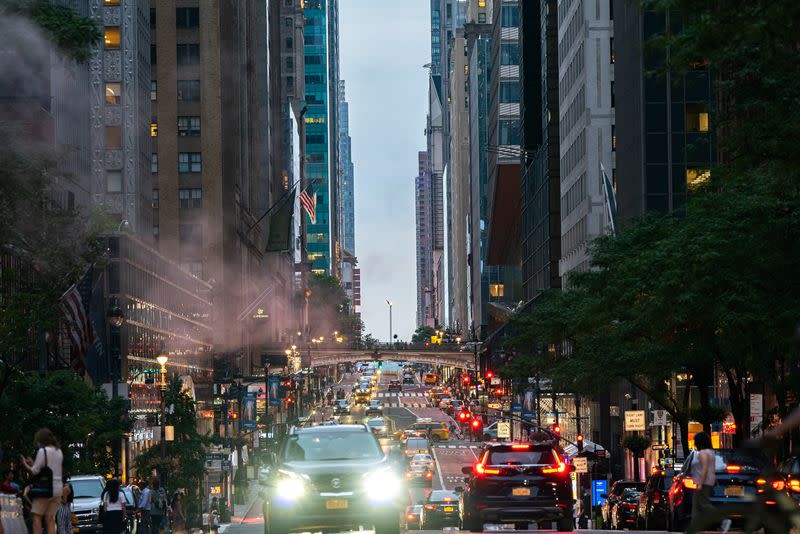Automakers ask US agency to reconsider emergency braking rule

By David Shepardson
WASHINGTON (Reuters) -A group representing major automakers asked the National Highway Traffic Safety Administration to reconsider the rule issued in April requiring nearly all new cars and trucks by 2029 to have advanced automatic emergency braking systems.
The Alliance for Automotive Innovation, representing General Motors, Toyota Motor, Volkswagen and nearly all other automakers said the requirement adopted in April that all cars and trucks would be able to stop and avoid striking vehicles in front of them at up to 62 miles per hour is "practically impossible with available technology."
Congress directed NHTSA in the 2021 infrastructure law to create a rule to establish minimum performance standards for automatic emergency braking (AEB) systems, which use sensors like cameras and radar to detect when a vehicle is close to crashing and then automatically applies brakes if the driver has not done so.
The group said NHTSA's stringent requirements at higher driving speeds will result in vehicles "automatically applying the brakes far in advance of what a typical driver and others on the road would expect" resulting in rear-end collisions. It also argued NHTSA "vastly underestimated the necessary and costly hardware and software change required for vehicles to comply.
"NHTSA’s action will require more costly systems that won’t improve driver or pedestrian safety," said the auto group's CEO John Bozzella in a letter to Congress, adding the agency rejected automakers concerns and the regulation "points to the breakdown of a deliberative rulemaking process at the country’s top traffic safety watchdog."
The requirement is the one of the most far reaching U.S. auto safety regulations in recent years. Safety advocates said existing systems were not performing well especially at night. They say the new rules are needed to ensure more crashes are avoided.
NHTSA did not immediately comment but said in April the rule will save at least 360 lives annually and prevent at least 24,000 injuries as traffic deaths spiked after COVID-19.
The rule requires the system to apply brakes automatically up to 90 mph when collision with a lead vehicle is imminent, and up to 45 mph when a pedestrian is detected.
Automakers said NHTSA should adopt a European standard that detects potential forward collisions, provides driver warnings and automatically engages the braking system.
In 2016, 20 automakers voluntarily agreed to make automatic emergency braking standard on nearly all U.S. vehicles by 2022 and by December all 20 had equipped at least 95% of vehicles with AEB, but critics say there is no way to ensure the effectiveness without government regulations.
NHTSA in March 2023 proposed requiring nearly all vehicles to comply in three years, but automakers are now getting five years.
(Reporting by David Shepardson;Editing by Chris Reese and Aurora Ellis)

 Yahoo Finance
Yahoo Finance 